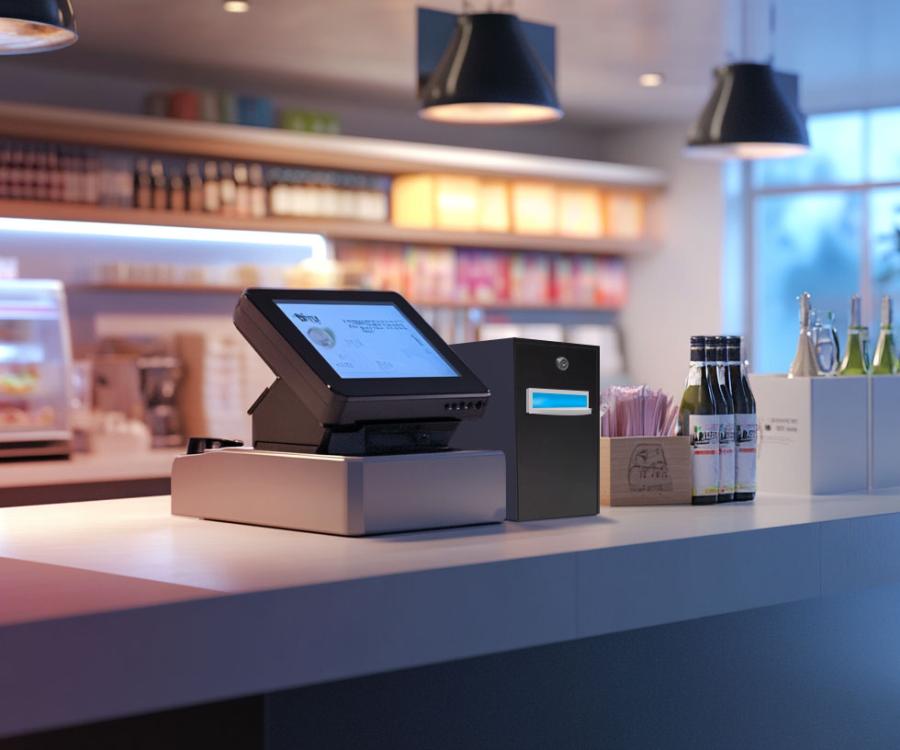
Cash, yes or no? Opinions differ on this. While some would like to replace it with alternative payment methods like credit cards or the smartphone right now, cash remains the preferred payment method for others. Even though paying without coins or bills is on the rise, according to the EHI Retail Institute, the cash volume at brick-and-mortar stores was just 53 percent in 2015. In a survey by the FOM University of Applied Sciences in Nuremberg, 81 percent of respondents (1,300 employed persons between the ages of 17 and 57) indicated they are against the abolition of cash. Coins and paper money continue to be an essential part of the payment mix in German retailing.
Cash costs money, barcodes save money
Having said that, Germany’s favorite means of payment comes at a high price: the supply of cash annually costs all involved parties several billion euros. In retail, these costs are incurred for instance as fees for coins to provide change for customers, to supply the cash registers, to count the revenue and to transport cash after closing time. Cash-back options at supermarket checkouts also add their share to this. Almost two-thirds of supermarkets and half of all hypermarkets already offer their customers cash-back options with their purchase according to a quick survey by the German Retail Federation (HDE) in October 2015. The HDE states that retailers incur costs when they offer cash-back options, which are generally higher than the cash processing fees charged by cash transportation services. The customer wants to pay with cash and retailers pay the price. So how do you now make a virtue of apparent necessity? Could retail potentially capitalize on this?
The answer lies in bringing cash logistics into the digital age. The potential benefit: more security and efficiency, meaning fewer expenditures and costs spent for cash cycle management. The basis for this is a high level of transparency in cash logistics, meaning a continuous value chain that can only work through a speedy and secure data exchange between all stakeholders. Efficient cash cycle management of the future is a network concern.
Joint interfaces and processes create security
Financial institutions, business enterprises, and solution providers already had the right instinct several years ago. Under the GS1 Germany umbrella, they founded the CashCommunity, to transfer the time-tested GS1 standards of the consumer good industry into the cash handling processes. The best-known retail example is the EAN-13 barcode which has sped up checkout processes for the past 42 years.

The CashCommunity analyzed 80 percent of all processes and communicated standardized actions in an application recommendation. This starts with master data reconciliation, ranges from cash deposits and outbound change orders of stores to supplying stores with currency and coins and cash pick-ups all the way to handling cash processing needs for automated teller machines. The application recommendation specifies the essential EDI communications and the usage of standards for these processes, such as communication via XML interfaces and the unique identification of banks or commercial enterprises via global location number GLN or cash products and services with the global trade item number GTIN. For the cash logistics partners, it means they speak the same language. Electronic steps replace manual operations. This facilitates continuous tracking and tracing of cash. It minimizes the risk and permits reduced insurance premiums. The risk of manipulation is decreased, while security increases.
Theory into practice: experiencing live digital cash logistics
More and more companies that apply the standards to benefit from digital cash cycle management are joining the CashCommunity. GS1 Germany supports this development by expanding the solution and by offering continuing education programs, the Congress for Cash Logistics and the ”Cash Management live!“ showroom. From retail store to ATM machine, the consolidation of daily revenues all the way to the cash center – the potential of unique identification, consistent interfaces, and comprehensive collaborations is unleashed in practical examples to benefit stakeholders in the cash cycle market.









